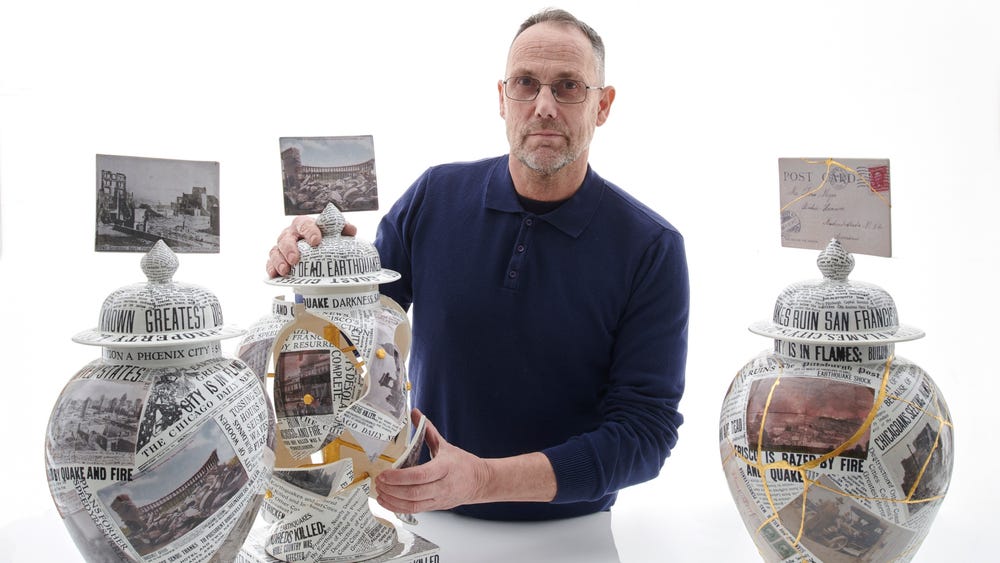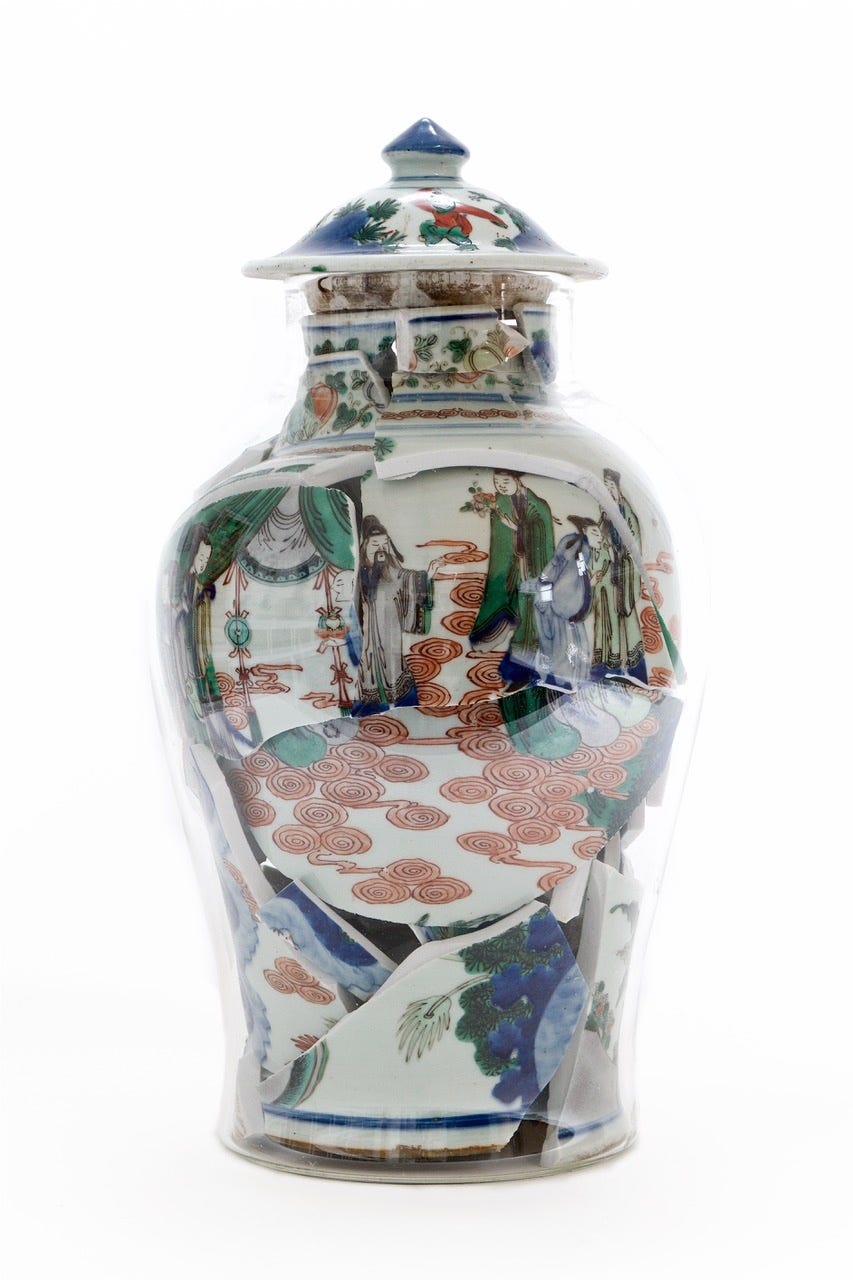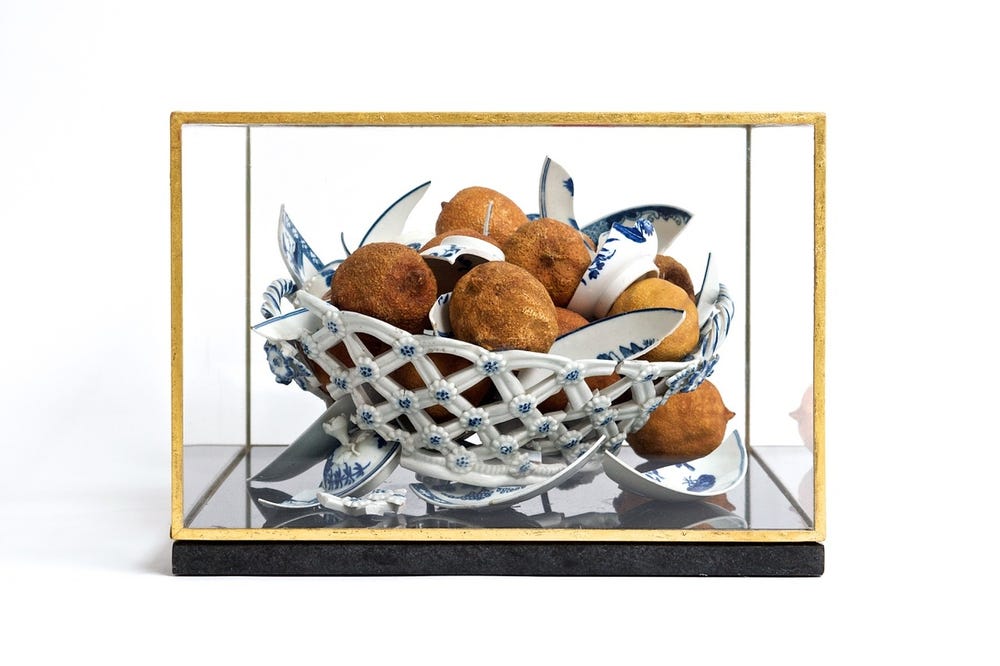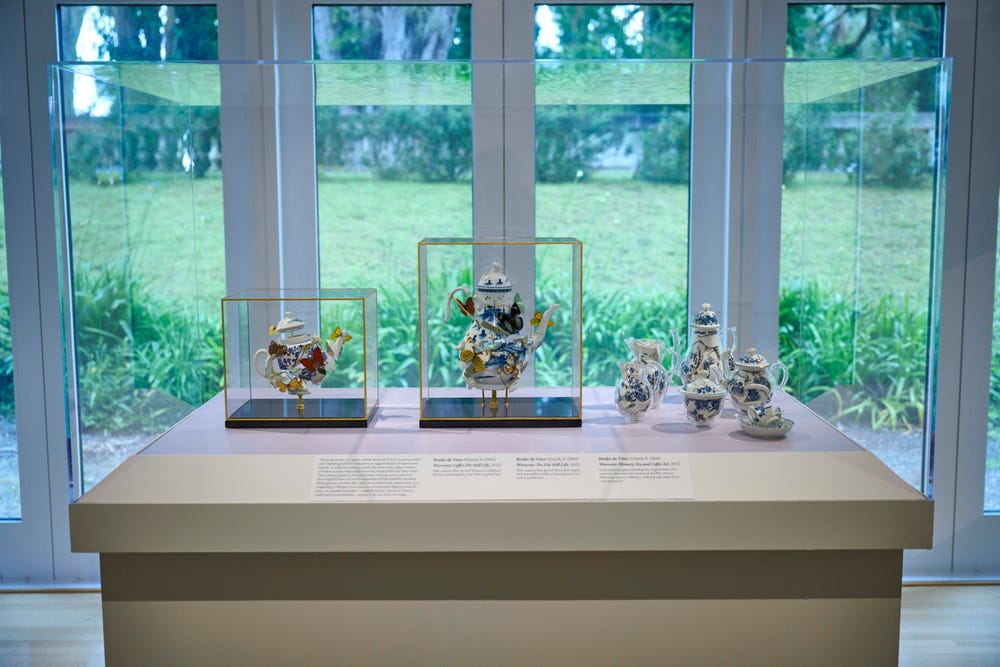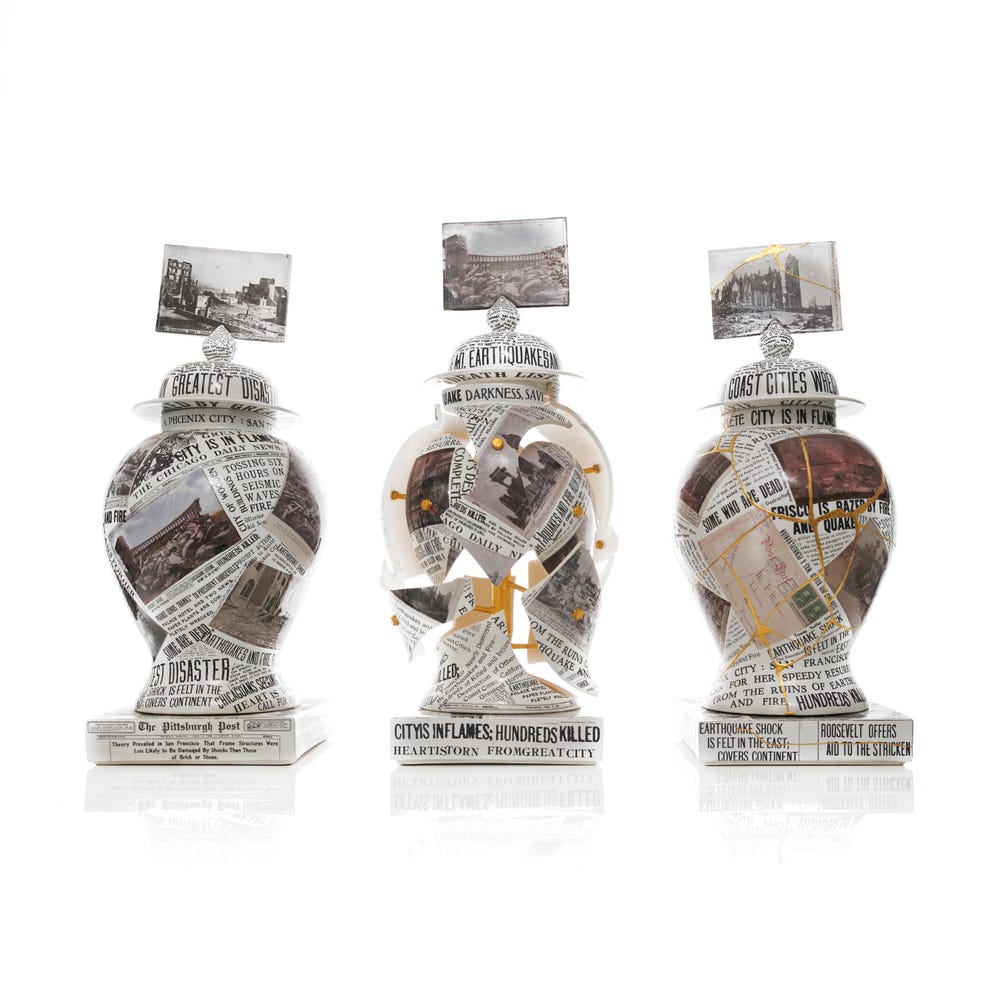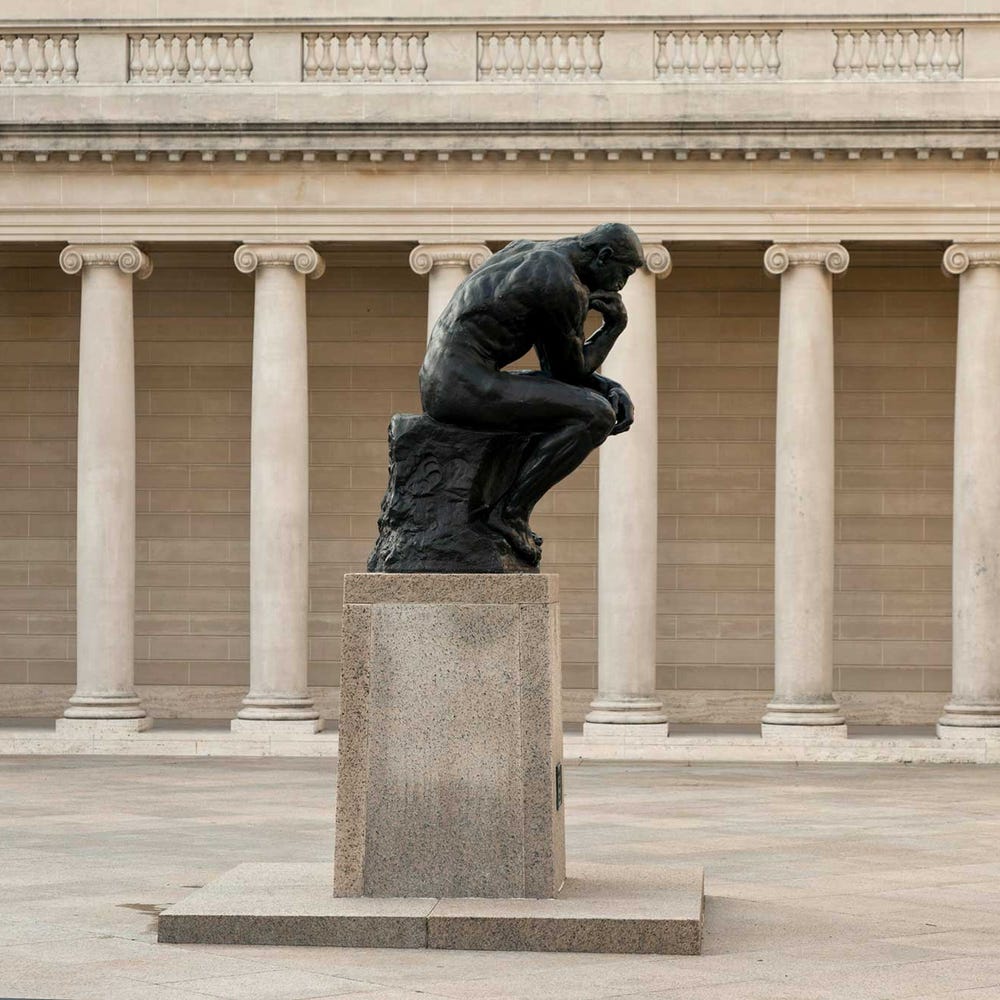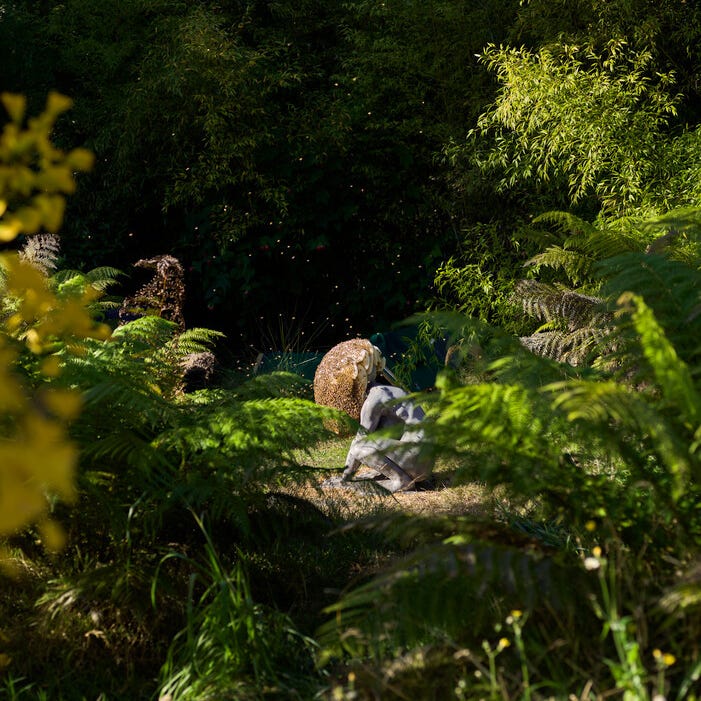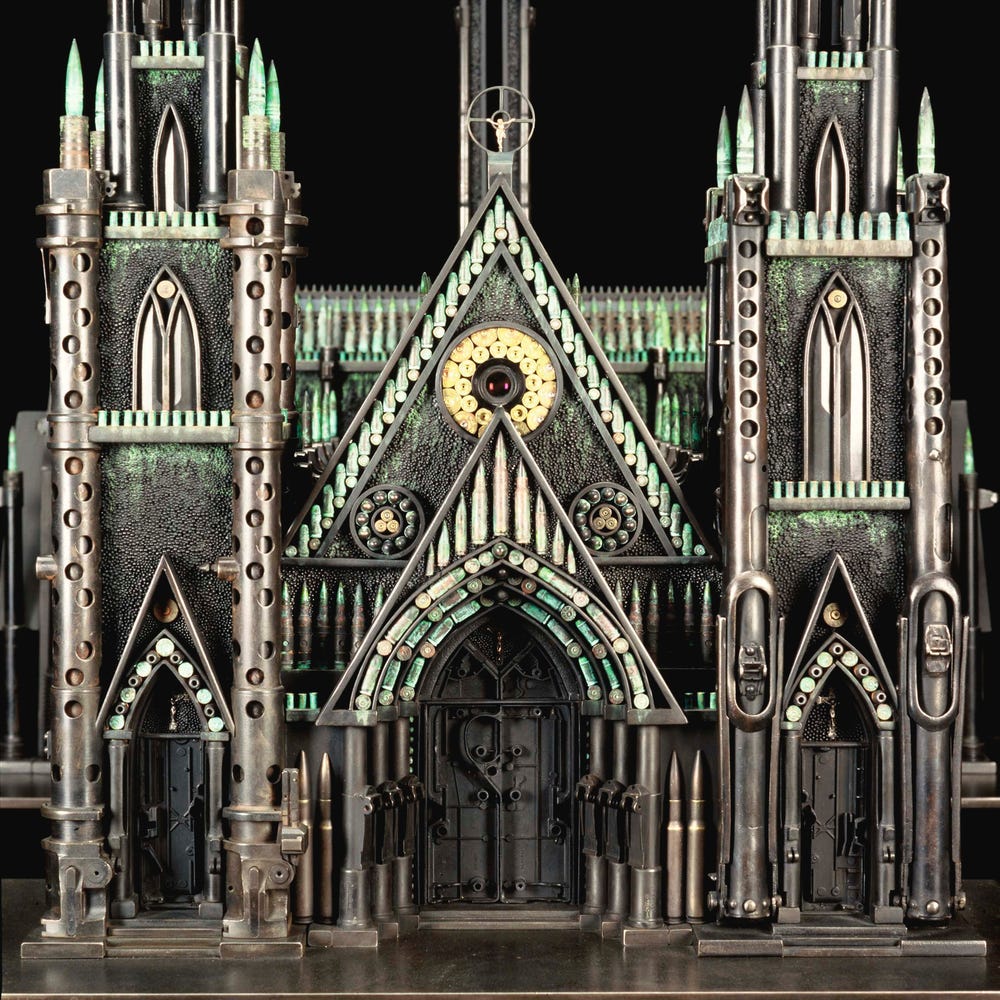Q+A: Artist Bouke de Vries
By Martin Chapman, curator in charge, European decorative arts and sculpture, in conversation with artist Bouke de Vries
September 13, 2023
Bouke de Vries, The 1906 Garniture, 2022. Image courtesy of Adrian Sassoon, London. Photography by Sylvain Deleu
On July 22, 2023, artist Bouke de Vries sat down with Martin Chapman, curator in charge of European decorative arts and sculpture, for a conversation ranging from tattoos to the 1906 San Francisco earthquake to giving broken ceramics a new life.
Martin Chapman: How did your training as a conservator influence the creation of your works of art?
Bouke de Vries: My restoration / conservation background has been a big part of my practice.
When I started making things, I began by doing so in the evenings and on weekends, just making things for myself. I had no great plans for the future, of becoming an artist full time, but everything developed very quickly.
My work balance used to be 20% art, 80% restoration. And now it’s probably about 10% restoration and 90% the art part. But I still like doing the restoration because it still feeds what I do.
MC: How do you obtain the smashed shards?
BdV: Everywhere. Because I’ve been a restorer / conservator, I have lots of connections with ceramic dealers.
I’ve got a couple of scouts in Holland. They go to auctions and have found some amazing things. I wouldn’t have time to go to all these places or look at all the auction catalogues. They just take a picture on the iPhone and they say, “Are you interested in this?”
I can’t stop. I can’t go past an antique shop without going into it.
Bouke de Vries, Famille Verte Memory Vessel with Court Officials, 2022. Images courtesy of Adrian Sassoon, London. Photography by Sylvain Deleu
MC: Can you tell us about your memory vessels?
BdV: When I was studying conservation, I worked for three months at the Victoria and Albert Museum, and I worked on pieces for the new glass gallery. One of the things I restored was a Roman glass cinerary, with a beautiful lid, which would’ve contained ashes. When 15 years later, I started making my own things, I thought, What if you apply that idea of a cinerary urn to a broken vase, but make the vase the exact shape of its original form? If you put these fragments back together, you get that shape. The glass is a memory of its former form.
One of these pieces, I put on Instagram a couple years ago. During lockdown, it took on a life of its own. It must’ve been reposted hundreds of times, hundreds of thousands of likes, and people started seeing things in it. People were saying, “Broken on the inside, but I’m still holding together.” I started getting people sending me pictures of tattoos they’d done of them.
MC: How do you get the pieces in?
BdV: If the neck is wider than the bottom, they go into the top, and if the bottom is wider than the top, they go in from the bottom. The bottoms are open. The bits at the top I do from the top, but it’s very tricky as I have to fix each fragment in position. You can only do one fragment at a time, and you have to make sure the adhesive is cured, otherwise it falls down.
Bouke de Vries. Worcester Still Life with Lemons, 2022. Images courtesy of Adrian Sassoon, London. Photography by Sylvain Deleu
MC: Can you talk about the relationship of your works to the Worcester pieces in the Bowles collection?
BdV: The pieces are very much inspired by what is here. I was delighted to see this huge collection of Worcester porcelain. And I already worked on Worcester porcelain in my student days, when I was training to become a conservator / restorer.
The first piece in the room, a blue and white Worcester basket, was based on Dutch still lifes, so it’s got the dried lemons in there. I love history, and if you’re from Holland, you’re really imbued with that tradition of the 17th century old masters. Everybody’s got reproductions, and some people have got the real thing in their houses. Christmas cards, calendars, it’s just part of life.
I made the still lifes with the broken pieces, and my thought is that these are the still lifes from the painting after the painter’s finished with them and they get pushed in a corner. The bowl breaks, the fruits dry out. It tells you a story.
Installation view of Bouke de Vries: Memories in Porcelain. Photograph by Jorge Bachmann, © Fine Arts Museums of San Francisco
MC: Do you want to talk a bit more about this group of Worcester pieces?
BdV: There’s a couple pieces, the coffee pot and tea pot. I’m trying to make them look like they are in the process of breaking, blowing apart.
In these pieces, I use butterflies. They’re not just there for decoration, but going back to the Dutch tradition, when you see butterflies in Dutch still lifes, and any insect and fruit that you see, they all have a meaning. The butterfly is a symbol for Christ’s resurrection, as the pupa and then becoming a butterfly, a thing of beauty. I also think that’s what I’m doing with my things, giving them a new life, resurrecting the broken fragments.
MC: Can you talk about the earthquake garniture you made as a reference to San Francisco and 1906?
BdV: History has always been a huge passion for me, and I don’t know where I found out about it, but I’ve always known about the 1906 earthquake in San Francisco. I collected postcards because I always thought it was bizarre that you would send somebody a postcard from a devastation.
Bouke de Vries, The 1906 Garniture, 2022. Images courtesy of Adrian Sassoon, London. Photography by Sylvain Deleu
These are all postcards taken very soon after the earthquake. The text is from newspaper headlines from the day after the earthquake from Pittsburgh, and Chicago. They have the addresses and the stamps on the back. We have the perfect vase, then the broken vase during the earthquake, and then the repaired one with the gold kintsugi technique, restored and still showing its damage as a memory of what happened to it.
This conversation has been edited for length and clarity.
